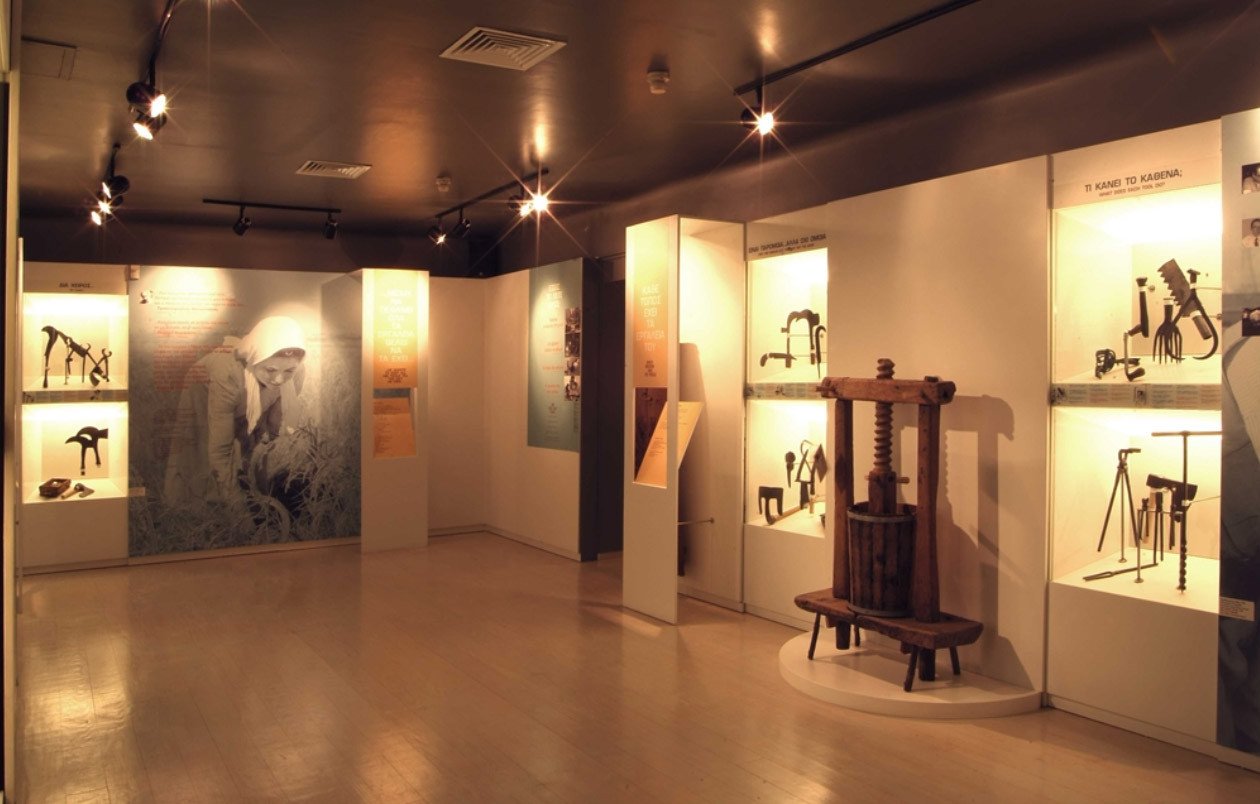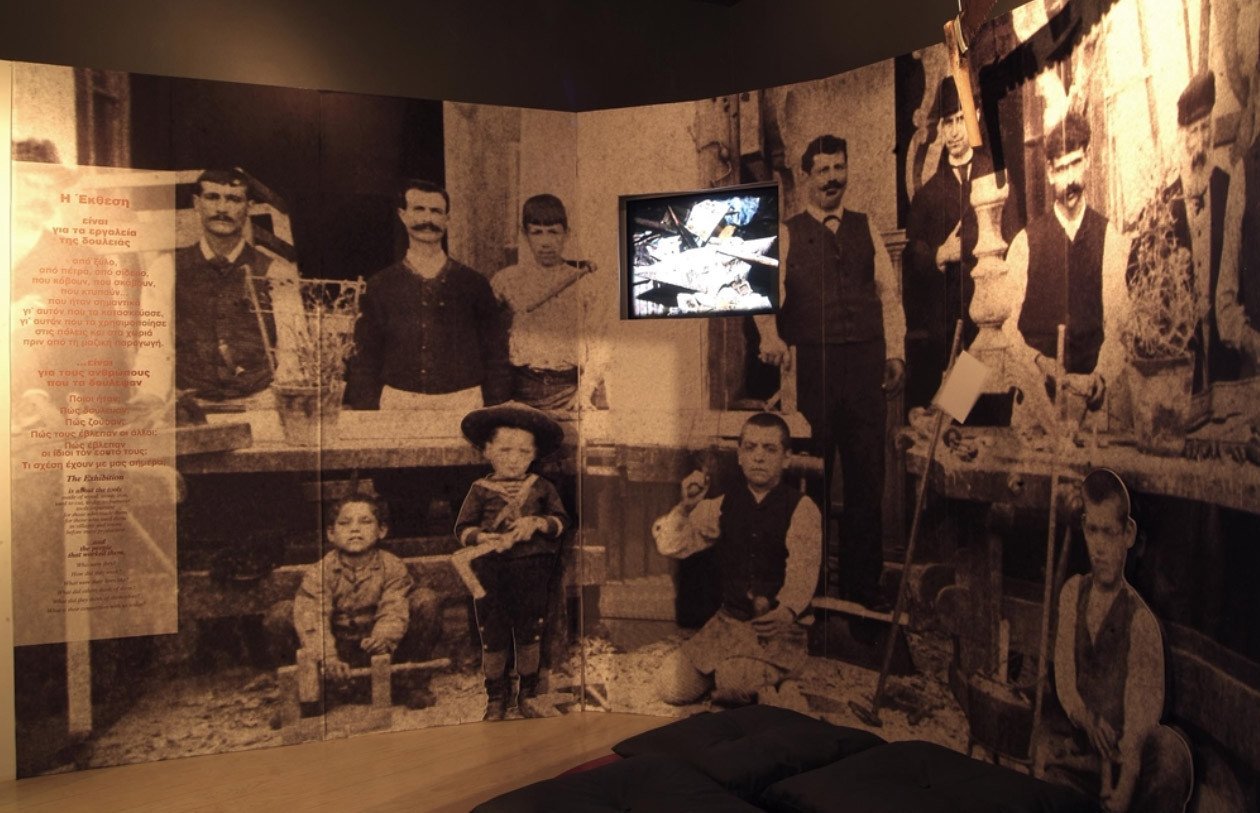“Your hands are as good as gold” (from traditional song)
The tools exhibited at the Panos House were painstakingly collected from all over Greece and were made of wood, stone, iron and used to cut, dig, and hammer…tools that held great importance to those who made them and to those who used them in the villages and towns before mass industrialization. This relationship of man and his tools is something this exhibition invites the visitor to explore through the narratives, quotes and pictures that are on display. Who were they? How did they work? What were their lives like? What did they think of themselves and what did others think of them?
The exhibits are arranged on the ground floor and basement of the house, displayed in glass cases, arranged by categories, with the geographical origin of each tool marked out. Threshing tools; anvils, tongs and pincers used by blacksmiths and coppersmiths; pruning tools used in the vineyard; pickaxes, hoes and other digging tools, each one designated by its specific name like “Belli” or “Tsatsali” among others; sickles used by coal-makers and axes used by lumberjacks; household tools; tools used by barrel makers, shoemakers, carpenters, saddle makers; hammers such as the “Baria” a sledgehammer to break rocks, and many more. They all attest to the ingenuity that created and modified tools to serve specific purposes and the wisdom of experience that was passed down from generation to generation.

You have heard expressions such as “Things come to a head”, “Strike when the iron is hot” and “You talk nineteen to the dozen.” These and others we use in our daily life have their origins in the crafts and trades of old.
Many times manufacturers as well as technicians would put their personal stamp on their tools through designs and decorations they engraved on them. One researcher best exemplified the emotional relationship of the craftsman and his tools by quoting an ironsmith from Andros who engraved a little bird on the sickle he made, so that “the sickle would sing when the harvester used it.”
The craftsman’s rights were often safeguarded by the law. The civil code stated that tools used to earn one’s daily bread through personal labor were exempt from any proceedings of confiscation of property. Marriage contracts often included tools as part of the dowry. And apprenticeship agreements clearly delineated the obligations of both parties cited.
There are the large photographs and displays that enumerate the trade fairs that took place as well as a listing of professions geographically throughout Greece.

And we are reminded that it was not only men who worked, but women also assisted their men but their work was not recognized as a profession, mainly because it was done in the context of the home.
One comes out of the museum visit with a greater appreciation of the pride the craftsman had for his trade amidst the hard realities of life in the pre-industrial era.
Visiting hours are Monday, Wednesday-Sunday 8:30am-4pm. Tuesdays are closed.
Admission is €2.
Cover Photo Credits: The Permanent exhibition " Man & Tools"